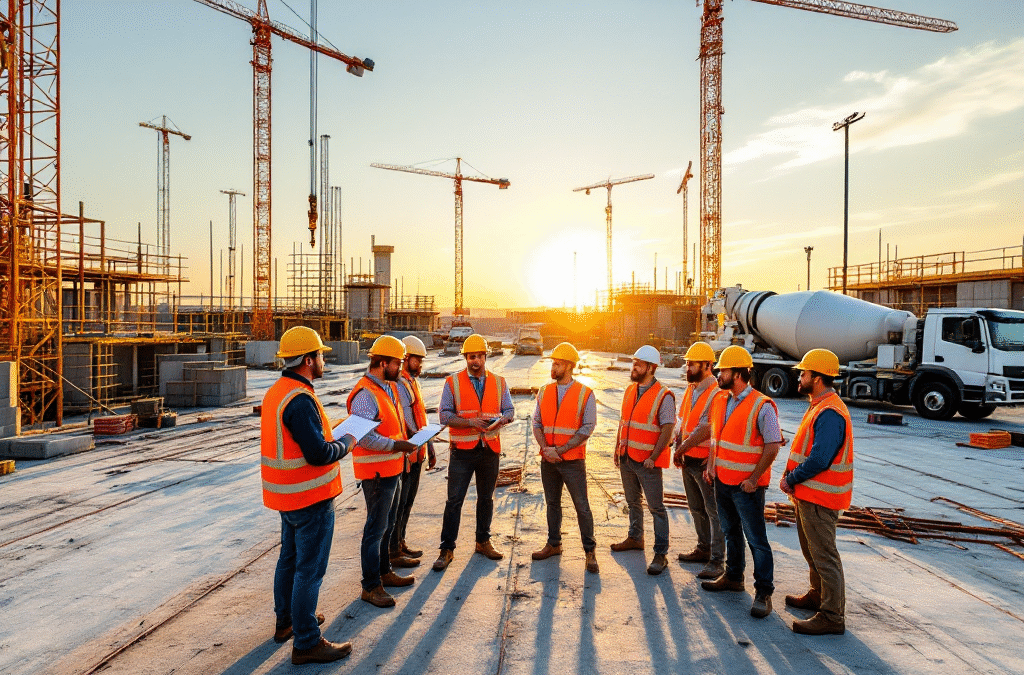I. Introduction
A Pre-Pour Checklist is essential for ensuring the success of large commercial concrete projects. Proper planning and execution can significantly reduce errors, delays, and costly revisions, which is vital in commercial construction where time and budget constraints are critical. By following a structured checklist, teams can systematically address the complexities involved in pouring concrete on a large scale.
Commercial concrete projects often involve significant investment and coordination of various resources, making thorough preparation non-negotiable. The scale of these projects demands a comprehensive approach that minimizes risk and maximizes the quality of the work performed. This article delves into the essential components of a Pre-Pour Checklist to ensure a seamless concrete pouring process.
II. Understanding the Pre-Pour Process
Definition of Pre-Pour Checklist
A Pre-Pour Checklist is a comprehensive document that outlines all necessary tasks and inspections to be completed before the actual concrete pour begins. This includes assessing site conditions, verifying materials, and ensuring equipment is in top shape. By following this checklist, teams can ensure that all critical aspects are reviewed, thus facilitating a smoother and more efficient pour.
Key Objectives of the Pre-Pour Phase
The primary objective of the Pre-Pour phase is to identify and mitigate any potential issues that could arise during the concrete pour. This involves thorough site evaluations, coordinating with team members, and confirming that all materials and equipment are ready and compliant with project specifications. Establishing clear objectives helps bolster project efficiency and sets the stage for success.
III. Components of a Pre-Pour Checklist
A. Site Assessment
Soil Testing
The first step in a comprehensive site assessment is conducting soil testing. This analysis determines the soil’s load-bearing capacity and ensures it is suitable for the intended concrete pour. A thorough understanding of soil conditions can prevent future complications such as cracking or settling. For more insight on how soil affects concrete projects, visit this guide on residential vs. commercial concrete applications.
Drainage Considerations
Next, assessing the site’s drainage plan is crucial to prevent water pooling or flooding that can jeopardize the integrity of the concrete. Proper drainage ensures that water does not compromise the foundation and helps prolong the lifespan of the concrete structure. Addressing drainage challenges upfront is vital for both safety and long-term durability.
Site Access and Safety
Site access is another critical element that affects the pour. Evaluating routes for concrete delivery vehicles and ensuring they are clear and safe is essential. Additionally, implementing a comprehensive safety plan protects workers and equipment during the pour, minimizing accidents and delays. Learn more about key safety measures for commercial pours here.
B. Material Verification
Concrete Mix Design
Material verification begins with reviewing the concrete mix design, which should be tailored to the specific project needs. Ensuring that the right proportions of cement, aggregates, and water are used is crucial for achieving the desired strength and durability of the concrete. Confirming mix specifications promotes adherence to industry standards and project requirements. For help, read this article on choosing the right mix.
Aggregate Quality
Next, checking the quality of aggregates used in the concrete is vital. High-quality aggregates enhance the overall strength and integrity of the mix. Inadequate or poor-quality materials can lead to long-term structural issues, making this step essential in the Pre-Pour Checklist.
Reinforcement Materials
Reinforcement materials, such as rebar or mesh, should also be reviewed to ensure they meet project specifications. Proper reinforcement provides additional strength to the concrete and helps prevent cracking. Each piece of reinforcement should be verified for dimensions and placement before the pour begins. Explore the importance of reinforcement in commercial concrete.
C. Equipment Inspections
Concrete Mixers
Before the pour, inspecting concrete mixers is a fundamental step. Ensuring that the mixers are functioning correctly and are clean prevents contamination of the concrete mix. Regular maintenance of equipment guarantees efficient operation during the pouring process.
Pumps and Delivery Systems
Next, reviewing pumps and delivery systems ensures that they can effectively and efficiently transport concrete to the pour site. Any deficiencies in equipment can lead to delays, affecting project schedules. Regular checks guarantee that the systems are in peak condition for a smooth pour.
Formwork and Shoring
Finally, inspecting formwork and shoring is crucial for maintaining the desired shape and support of the poured concrete. Properly built forms should be level, sturdy, and free of defects. Inspecting these elements ensures that the concrete retains its intended form and integrity during hardening.
IV. Team Coordination
A. Roles and Responsibilities
Effective communication and clearly defined roles are vital for a successful concrete pour. The Project Manager oversees the entire operation, ensuring all aspects are coordinated and executed per the project plan. The Site Supervisor manages day-to-day operations, confirming that on-site tasks are carried out efficiently and safely.
B. Communication Protocols
Implementing effective communication protocols facilitates teamwork among crew members. Ensuring that everyone is on the same page, especially during the pouring process, can mitigate miscommunication and errors. Regular updates and briefings keep all team members informed, contributing to a more cohesive effort. Be sure to avoid these common concrete construction mistakes.
C. Pre-Pour Meeting Agenda
A Pre-Pour Meeting is essential to discuss logistics, safety protocols, and any last-minute concerns. This meeting serves as a platform for addressing questions and ensuring all team members understand their responsibilities. A well-planned agenda fosters collaboration and clarity, setting a positive tone for the upcoming pour. For a broader view on pour planning, check what to expect during a commercial concrete installation.
V. Weather and Environmental Considerations
A. Temperature Effects on Concrete
Environmental conditions, particularly temperature, significantly impact the performance of concrete during curing. High temperatures can accelerate the curing process, potentially leading to cracking, while low temperatures may slow down hydration. Monitoring and preparing for temperature variations ensures the concrete cures properly. See how weather affects concrete here.
B. Rain and Humidity Factors
Heavy rainfall or high humidity levels can pose challenges for concrete work. Wet conditions can compromise the curing process and weaken the final structure. Establishing a robust plan to mitigate weather-related issues is essential to protect the quality of the concrete.
C. Mitigation Strategies for Adverse Conditions
To safeguard against adverse weather conditions, various strategies can be employed. Utilizing protective covers, adjusting pour schedules, and employing chemical accelerators or retarders can help manage environmental effects. Being proactive in addressing weather concerns is crucial for successful project execution.


